Dr. James Hayes-Bohanan
Chair, Department of Geography
Bridgewater State College
Revised: November 7, 2012

350 IS THE GOAL
| An Inconvenient Geography:
Global Climate Change Dr. James Hayes-Bohanan Chair, Department of Geography Bridgewater State College Revised: November 7, 2012 |
 350 IS THE GOAL |
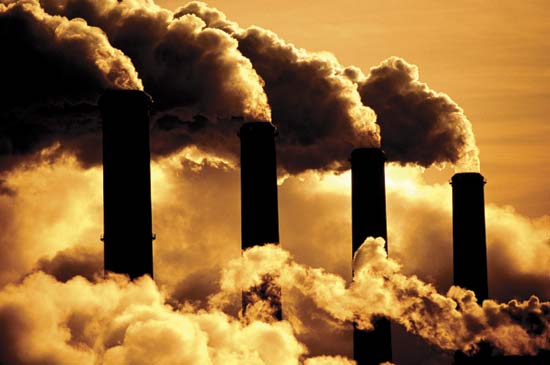 Image Source: Encyclopedia Britannica |
Listen |
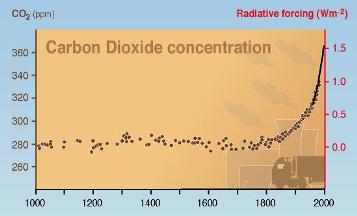 |
The Intergovernmental Panel on
Climate Change is a team of leading experts from many
fields,
organized
by the United Nations Environmental Program and the World
Meteorological Organization. The IPCC has written four
comprehensive
reports since 1990. In its Fourth Assessment Report,
released in 2007,
scientists
from 113 countries
have concluded that no doubt remains that
human activity is forcing unprecedented climate change. The IPCC web site is the most authoritative source of information on climate change, including causes, consequences, and mitigation. It is also a great source for graphics. The one shown to the left is number 5-2 in a gallery of authoritative images in several formats. It indicates that CO2 levels have indeed varied somewhat in the years prior to industrialization. In an 800-year period, that variation was fairly random and on the order of 20 parts per million. In the more recent 200-year period, the variation has been in one direction only (upward) and on the order of 80 parts per million. This is really not at all surprising -- the human has increased about ten-fold since 1800, with the fossil-fuel use per person increasing steadily. |
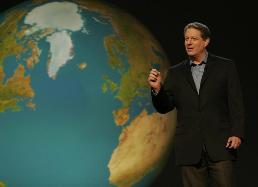 |
An
Inconvenient Truth documents former Vice
President Al Gore's
efforts to educate the general public about climate change.
I use the
film to introduce the topic to students and civic groups.
The Climate
Crisis web site is the official site of the film, and of
Gore's
organizing efforts around the film. The site includes
educational
materials, latest news. If you have not seen the film, I encourage you to do so. If you have seen it, please visit the web site for more information. If you have the DVD, have a look at the special features, which include a short piece about developments since the film's release. The presentation of science in the film is not flawless; if anything, it is too optimistic. Gore covers remedies too superficially and uncritically. He gives the impression -- unintentionally, I think -- that freezing carbon emissions near current levels is relatively easy and will be sufficient. Neither part of this is true: it will be hard to freeze emissions, and in fact dramatic reductions are needed -- perhaps 80 percent by 2040. Although the major thrust of the film reflects scientific concensus, a few details are dubious, and have been the subject of an unfavorable court ruling in the United Kingdom. The BBC offers a cogent description of the case and some useful, related links. |
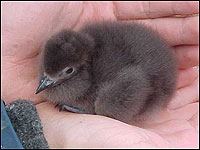 |
Climate
Connections is a year-long collaboration
betweenNational Public
Radio and National Geographic. The eclectic series covers
everything
from political and
economic implications to the impacts on plants, animals,
farmers,
nomads, and even vacationers. The chick shown to the left is part of a story about the disruption of feeding habits for migratory birds. For those not familiar with NPR, this series is a great introduction to a style of journalism that can turn a radio into a tool for lifelong learning. |
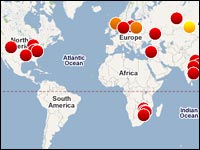 |
Where
does it come from? Geographers are interested in
questions of where. With
respect to climate
change, a lot of the interesting locational questions
concern
vulnerability and where the biggest problems are likely to
emerge.
Another equally important set of questions relates to the
location of
greenhouse gas sources. This site -- cleverly named
CARMA.ORG -- allows
visitors to identify the major stationary sources of carbon. Use this site to find out how local utilities compare to their peers, how your region compares to other regions, or what geographic patterns you can discern. More importantly, use it -- as its developers hope -- to prioritize change! Be sure to explore the site a little -- the first map you see is only showing the top sources. For some background and context, listen to NPR's November 15, 2007 story, Web Site Tracks Carbon Emission Sources. |
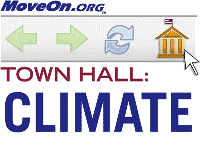 |
MoveOn.org is a progressive
political organization that is trying to make climate change
a key
issue in the 2008 presidential campaign. As part of this
effort, MoveOn
brought together eight candidates for the Democratic
nomination, and
asked each how he or she would address the problem.
Together, their
answers provide a good introduction to what is at stake
politically. The League of Conservation Voters is just beginning a similar effort. LCV's Heat Is On campaign is encouraging people to contact the candidates, but will also be showing where candidates stand as the campaigns unfold. Some of the boldest political stands have been taken by Republicans, but not those running for president. California Gov. Schwarzenegger is suing the Bush Administration for its inaction on climate, and has made its own side agreement on emissions with the United Kingdom. Florida Gov. Charlie Crist, recognizing the threat to his warm, low-lying state, has organized a Climate Change Summit, which even included a showing of Al Gore's movie! |
 |
The Center for a New American
Dream has brought the viral marketing concept to bear on
climate
change. Each month, its C3
program suggests something people can actually do to help,
and each
month it launches a campaign to promote that idea. I signed
up in July
2007, when the idea was to buy one pound of locally grown
food each
week -- admittedly, this is something we already do, so it
was an easy
pledge that time! Check the C3 site often to find the latest ideas for reducing carbon emissions. |
 |
Most households in the United
States get electricity from the burning of fossil fuels,
including
coal, oil, and natural gas. Taking a home, school or office
off of the
grid is a good way to reduce carbon dioxide emissions, but
it is not
always practical. Reducing electricity usage by using more
efficient
lighting and appliances (and simply turning off these things
when not
in use) is also helpful. Offsets are no substitute for conservation, but they do provide a way for those consumers still on the grid to reduce their impact. Through Renewable Choice, consumers can buy wind energy for the grid, in an amount comparable to the carbon-based energy they are taking off the grid. We have taken this step at our house, and since we use a lot less energy than the average household, we are probably offsetting ourselves and part of a neighbor! Whole Foods market participates in the program, and even offers gift cards to new customers. |
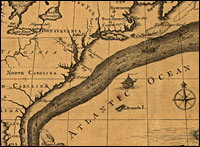 |
Tides are and currents are
large, perpetual sources of energy that scientists and
engineers are
now trying to harness for energy. NPR's Greg Allen
reports on an
effort at Florida Atlantic University to harness the Gulf
Stream. LEFT: A chart of the Gulf Stream based on Ben Franklin's sketches, circa 1786. Library of Congress |
 |
One of the most encouraging
responses to climate change since Al Gore's movie has been
the rapid
adoption of compact fluorescent lighting in the United
States. They had
already been widely used in other countries and by committed
environmentalists in this country, but the relatively high
purchase
price had been a barrier in our math-challenged society.
Since they
last ten times as long as regular bulbs and use less than
one-quarter
of the energy, they have always been a bargain. Now major
retailers
(including Walmart, which is desperate to repair its image) have introduced a
much wider
variety of the lights at a much lower cost, so that there is
no real
reason not to use them. Over a period of seven years, each bulb being used on the regular electric grid saves carbon equal to 1,000 miles of driving an average car. I offset the carbon emissions from all of my family's automobile driving each year by giving away these bulbs (and begging people to install them). Since we drive 18,000 miles per year, I give away 18 bulbs. Organizers of large meetings can do something similar -- giving away bulbs to each participant more than offsets the amount of carbon used to drive to the meeting. If participants already have replaced all of their bulbs (as we have), they can pass them along. As the prices continue to drop, of course, giving away bulbs will no longer be possible. I will have to find ways to go even further in carbon reduction! Of course, Energy Star is not just about light bulbs. Explore the site for information about a lot of other products that can reduce energy use and therefore, in most cases, carbon emissions. See my own energy page for other energy resources and background information. |
 Student Pugwash USA is a student-led effort to engage science education for the public good. See what they have to say about climate change. |
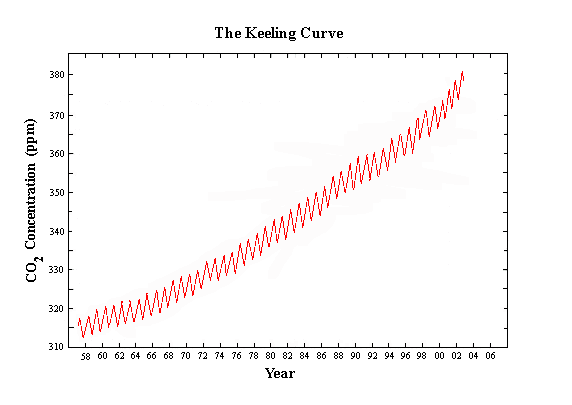
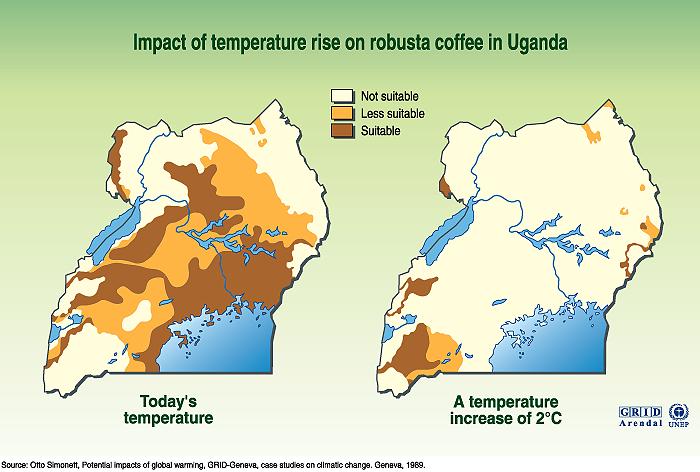
Post-Kyoto Climate
Cooperation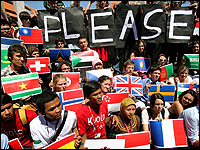 The
global North and the global
South need to come to some
understandings about how to address climte change. NPR
reporter
Christopher Joyce provides a good introduction to some of
the issues
involved in his story on paying
developing
countries to conserve forests. The
global North and the global
South need to come to some
understandings about how to address climte change. NPR
reporter
Christopher Joyce provides a good introduction to some of
the issues
involved in his story on paying
developing
countries to conserve forests.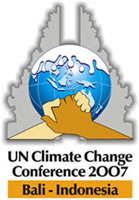 Joyce
reported the story from Bali,
Indonesia,
the fourth-most populous country
in the
world. Bali hosted a global conference on climate change,
whose
intention was to work toward North-South agreements to
follow the Kyoto
Accords. The United States, of course, was resisting the
rest of the
world's delegates throughout most of the conference, but on
the last
day, the U.S. agreed to join
the
rest of the world community in working toward a
successor
agreement. Joyce
reported the story from Bali,
Indonesia,
the fourth-most populous country
in the
world. Bali hosted a global conference on climate change,
whose
intention was to work toward North-South agreements to
follow the Kyoto
Accords. The United States, of course, was resisting the
rest of the
world's delegates throughout most of the conference, but on
the last
day, the U.S. agreed to join
the
rest of the world community in working toward a
successor
agreement. |
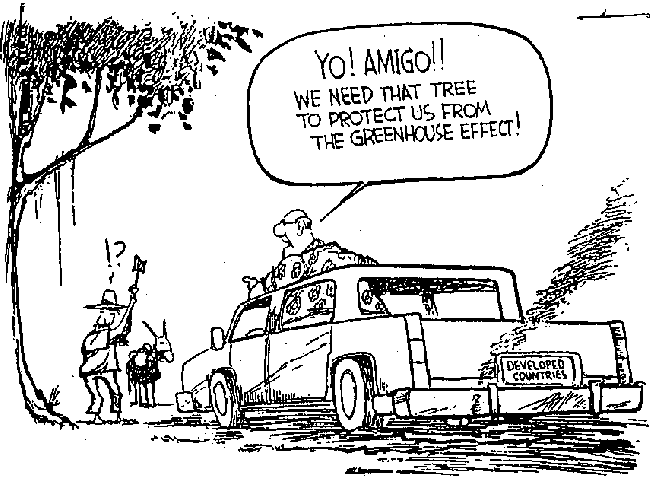 |